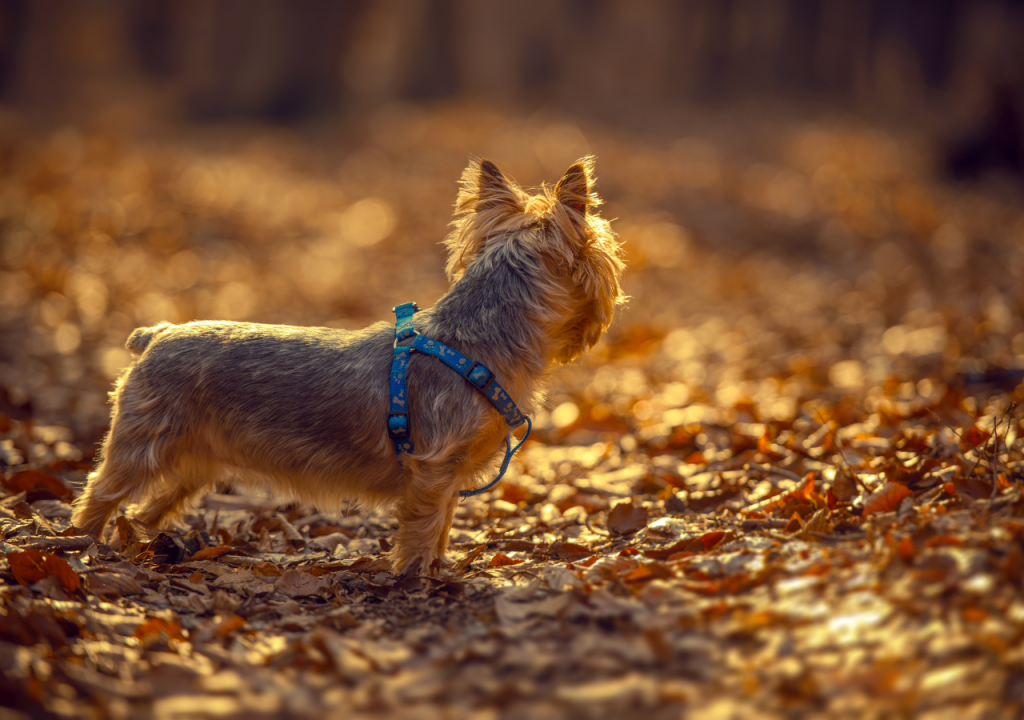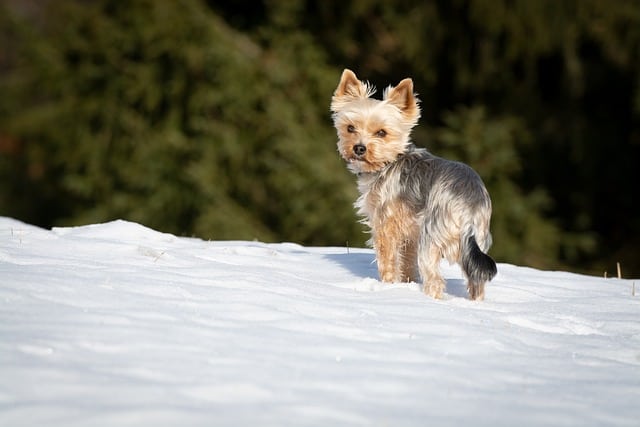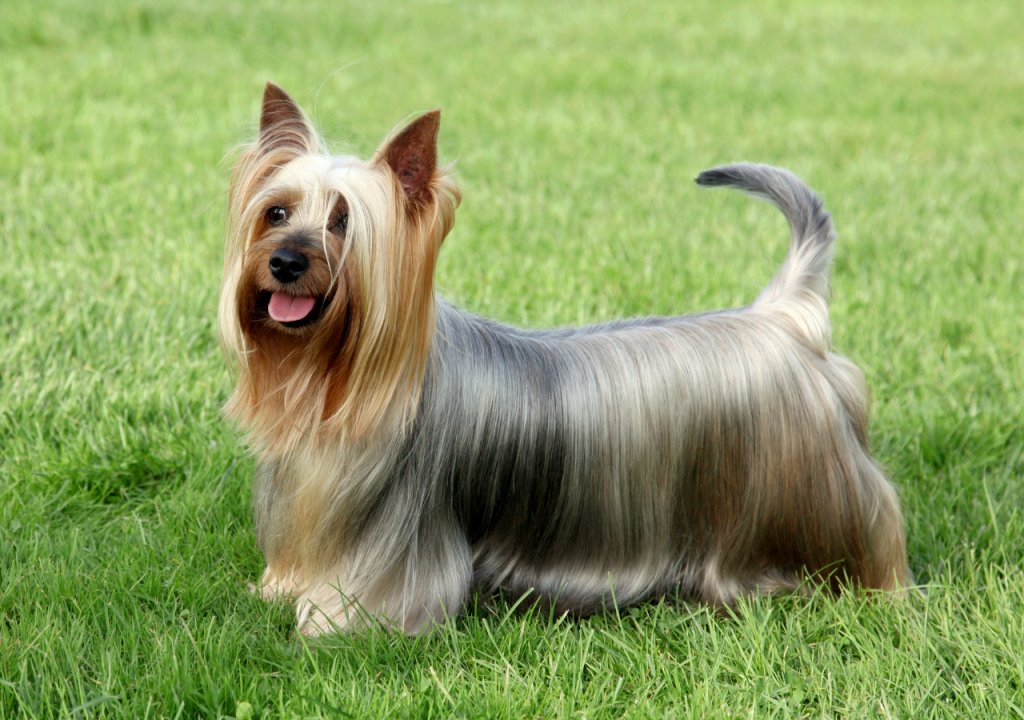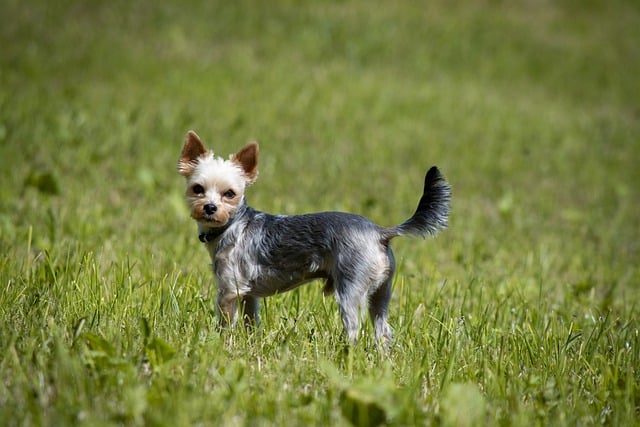Widely famous for their vivacious nature and irresistibly cute appearance, Yorkshire terriers take the world by storm. Besides they are recognizable for their rich and silky coats that can come in different cuts, Yorkies also have different types of tails. That’s why we decided to reveal everything you need to know about Yorkshire terrier tail, their length, and whether they should be docked.

What kind of tail does a Yorkshire terrier have?
As we all know, different dog breeds come with different tails, and Yorkies are one of them. The distinctive tail of a Yorkshire Terrier definitely sets him apart from other breeds, with his graceful and merry nature.
Originally, a Yorkshire Terrier’s tail was docked at medium length. It’s a practice stemming from the dog’s working history that helps to make the breed more agile and injury resistant. Nevertheless, public opinion towards docking the Yorkie tails has changed over the years. Many experts don’t recommend this practice and advise leaving a natural length and shape.
A Yorkie’s tail, whether docked or natural, is an expressive tool, conveying emotions ranging from joy to apprehension. When a Yorkshire Terrier is happy or excited, its tail wags with an enthusiasm that seems to involve their entire body. Conversely, a tucked tail can indicate fear or submission, revealing the sensitive and perceptive nature of this breed.
The Yorkshire Terrier’s tail, which is covered in a coat that matches the rest of their body, is a continuation of their luxurious flowing locks. Therefore grooming on a regular basis is important to prevent matting and to keep their lovely appearance. Whether displayed proudly at a dog show or wagging wildly during a playful romp in the park, a Yorkie’s tail is a vital aspect of their personality and charm, embodying the vivacious spirit of this beloved breed.
Is Yorkie tail docking necessary?
Definitely no! Yorkshire terriers don’t need to have their tails docked. Unfortunately, this practice was common in the past because these pooches were used as ratter dogs. Their job was to chase and catch rats, and having a shorter tail helped prevent injuries during these chases. It made it easier for their owners to grab them quickly if needed, without getting caught on anything. However, times have changed, and most Yorkies now enjoy life as pampered pets rather than working dogs. Today’s Yorkies definitely kept their vivacious spiri, but they don’t need to chase rats and mice.
As such, the practical reasons for tail docking are no longer relevant. Many places have even made tail docking illegal, recognizing that a Yorkie’s long, natural tail doesn’t hinder their health or happiness. Today, a Yorkie’s tail is more about looks or tradition than necessity. So, no, tail docking isn’t necessary for Yorkies anymore. They can live perfectly happy and healthy lives with their full, expressive tails just as they are.

Possible problems with Yorkshire terrier tail
Just like with any other dog breed, Yorkies can also have certain problems with their tails. Here are only some of them:
1- Matting:
Yorkies have long, silky fur that can easily become tangled or matted, especially around the tail area. Therefore, it’s very important to regularly clean and groom their tail. If you don’t know what type of brush to use on your Yorkie, then we recommend you read the blog post on the top 4 picks of Yorkie brushes.
If not regularly groomed, these mats can pull on the skin and cause discomfort or even lead to skin infections. Then, your Yorkshire terrier’s tail can end up with bald spots and become very painful in touch.
2- Skin Infections:
The skin around the tail can become a hotspot for infections if not kept clean and dry. Yorkies might not have tail pockets like French bulldogs, but feces and dirt left under the tail can also cause skin infections.
This is especially important to consider if the tail is docked, as the procedure can sometimes lead to complications if not done properly.
3- Fleas and Ticks:
The tail area can also be a hiding spot for fleas and ticks. Since they search for warm and dark spots, you should check this area on your Yorkie’s body daily. Also, make sure you check the area behind the ears and armpits.
These pests are not only annoying but can transmit diseases and lead to flea allergy dermatitis, a painful skin condition.
4- Injuries:
Yorkies are energetic and love to explore, which can sometimes lead to tail injuries. Whether it’s a close door, a rough play session, or getting caught on something, tail injuries can be painful and may require veterinary attention.
5- Limber Tail Syndrome:
Also known as “cold water tail” or “swimmer’s tail,” this condition can affect Yorkies and is characterized by a limp, painful tail. It’s often seen in working dogs but can occur if a Yorkie is overexerted or exposed to cold water.

Yorkshire Terrier Tail Length: Docked Vs Undocked tail
In its natural state, a Yorkie’s tail can be about 3 to 4 inches long, showcasing a beautiful, flowing coat that extends over the tail. In miniature or teacup Yorkies, the length of their undocked, natural tails can be between 1-3 inches long.
Docking, a practice that involves shortening the tail for cosmetic or historical working reasons, can reduce the tail length to just a few inches. Docked tails in Yorkshire terriers usually go about half its natural length (1-2 inches).
Yorkshire terrier with a long tail or a short tail?
Regardless of whether you want to dock your Yorkshire terrier’s tail or not, one thing is for sure. Both dogs will be great family pets and will fill your life with joy. In the end, we all want to live only with a healthy and happy dog. So, livng with a Yorkie with long or short tail is not important. The only thing to keep in mind is to provide your pet with a lot of love and respect.



